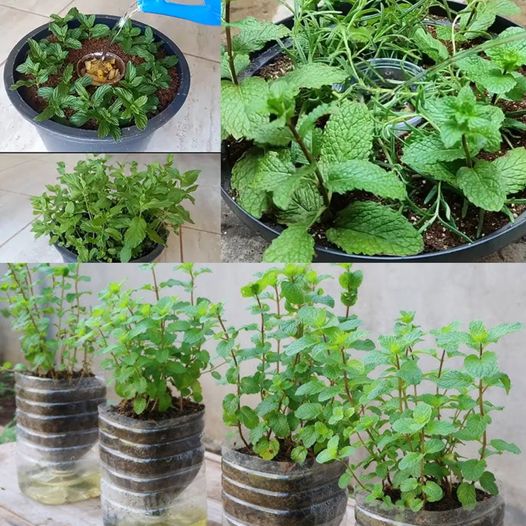
For those of you who have a deep passion for herbs and gardening, planting and nurturing your own mint can be an immensely rewarding experience. Mint, an aromatic and versatile herb, is not only a delightful addition to any garden or kitchen, but it also offers a range of benefits. In this article, we will introduce you to a unique and effective technique for cultivating mint and other herbs, simplifying the process and delivering excellent results. Get ready to discover the smart way to create a self-contained, nutrient-rich reservoir that provides your mint plants, or any other herb, with the nourishment they need to flourish.
The Wonders of Mint and Herbs
Before we dive into the planting technique, let’s briefly explore why mint and herbs, in general, are beloved by gardeners and cooks:
-
Versatility: Mint comes in various flavors, including peppermint, spearmint, and chocolate mint, each with its unique taste and aroma. This versatility makes mint an excellent addition to a wide range of dishes, from salads and beverages to desserts. The same versatility can be applied to many other herbs as well.
-
Medicinal Properties: Mint is renowned for its medicinal properties, including aiding digestion, soothing headaches, and reducing nausea. Many other herbs also have valuable medicinal properties.
-
Aesthetic Appeal: Mint is visually appealing with its vibrant green leaves, making it an excellent choice for ornamental gardens. Herbs, in general, can add a touch of beauty to any garden.
Now, let’s explore the unique planting method that will help your mint, or any herb, thrive.
Planting Mint or Any Herb the Smart Way
Growing mint or any herb using the “plastic cup method” is a smart and efficient way to ensure your plants receive consistent nourishment while minimizing the risk of overwatering. Here’s a step-by-step guide:
Materials You’ll Need:
-
A suitable pot or container of your choice.
-
Potting soil or garden soil mix.
-
A perforated plastic cup.
-
Mint cuttings, herbs, or young plants.
-
Natural fertilizers such as garlic and banana peels.
-
Water.
Step 1: Preparing Your Container
Select a container large enough to accommodate your plants. Mint and some other herbs can be invasive, so containment is essential. Fill the container with potting soil or a garden soil mix, leaving enough space for the plastic cup.
Step 2: Preparing the Perforated Cup
Take a plastic cup and create small holes in the sides and bottom. These holes will allow water and nutrients to gradually disperse into the soil, promoting even moisture and nutrient distribution.
Step 3: Placing the Plastic Cup
Bury the perforated plastic cup in the center of the container. Position it so that the rim of the cup aligns with the soil surface, resembling an ‘o’ from above. This facilitates the easy addition of water and fertilizers.
Step 4: Incorporating Fertilizers
Fill the plastic cup with a blend of crushed garlic and banana peels or other natural fertilizers. These will release vital nutrients slowly into the soil, providing your plants with the nourishment they require.
Step 5: Planting Mint or Any Herb
Surround the plastic cup with your mint cuttings, herb seedlings, or young plants. Ensure they have sufficient space to grow while benefiting from the nutrients within the cup.
Step 6: Watering
To water your mint or herbs, simply pour water directly into the plastic cup. The water will seep through the cup’s holes, transporting the nutrients from the garlic and banana peels into the soil, enriching it and nourishing the plant roots.
Step 7: Maintenance
Mint and most herbs are relatively low-maintenance, but it’s crucial to monitor them. Regularly check the plastic cup to confirm an adequate water and fertilizer supply. Water the plants surrounding the cup as necessary to maintain consistently moist soil without overwatering.
In Conclusion
By embracing the “plastic cup method,” you’ll successfully cultivate flourishing mint or any herb with minimal effort. This innovative technique offers a straightforward yet effective approach to provide your plants with the necessary nutrients while preventing overwatering. With fragrant and versatile mint leaves, or other aromatic herbs, at your disposal, your culinary endeavors will be enriched, and your garden will thrive. So, why not give this method a try and savor the abundant rewards of your herb garden? Happy planting!




